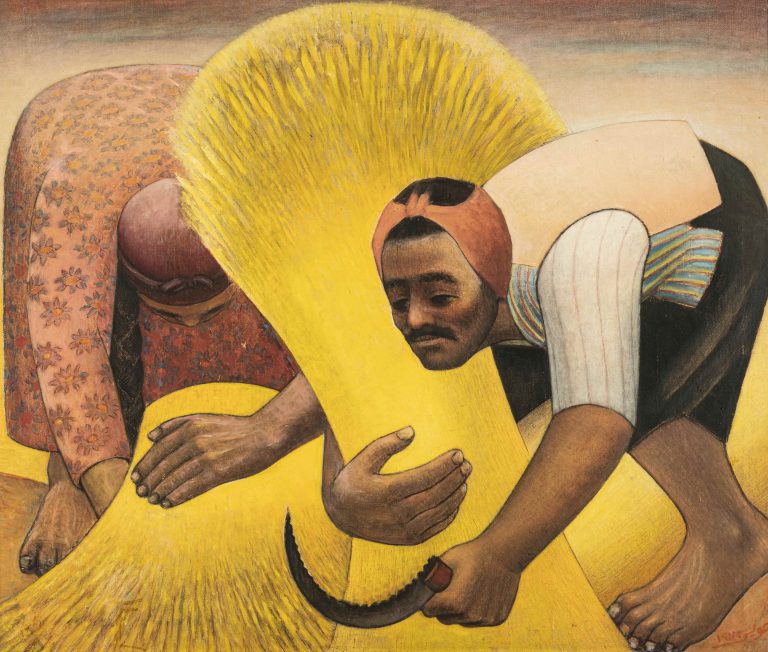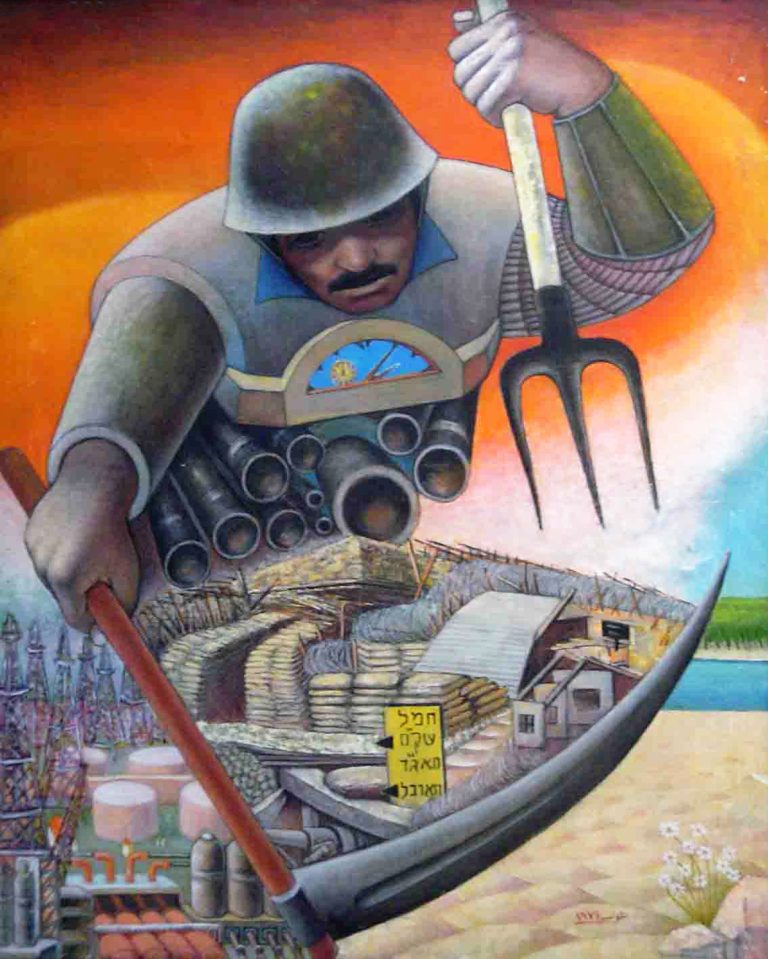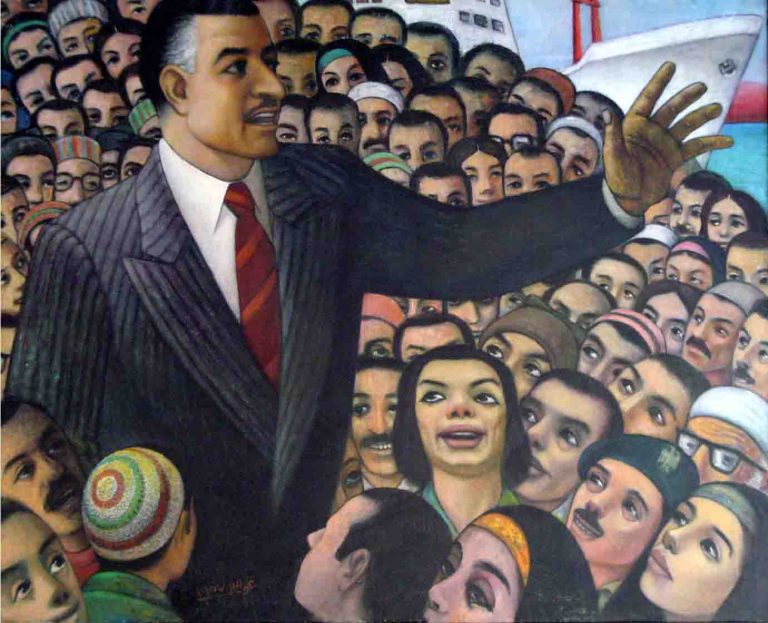Painter
Mohammed Hamed Owais
Hamed Owais was born in 1919 into a peasant family in a small village in Beni Soueif.
There, he received his primary and secondary education before working as a metalworker. He soon realized he was not fit for this profession and moved to Cairo, where he joined the School of Fine Arts. After he graduated in 1944, he pursued his studies at the Institute of Art Education in Cairo, where he was trained by the pedagogue and critic Youssef el-Afifi. He received his diploma in 1946 and, in the following year, he founded the Group of Modern Art, together with other artists of his generation, such as Gamal el-Sigini, Gazbia Sirry, Zeinab Abdel Hamid, Salah Yousri, and Youssef Sida.
From 1948 to 1955, Owais worked as a drawing teacher at the Farouk Ist Secondary School in Alexandria. He traveled to Italy in 1952 and visited the Venice Biennial, where the works of Italian Social Realist artists were being exhibited. In 1958, he was appointed a professor at the Faculty of Fine Arts in Alexandria just after it was founded by the sculptor Ahmad Osman. In 1967, Owais received a scholarship to continue his studies at the Royal Academy of Fine Arts in San Fernando, Madrid, where he received his diploma in 1969.
From 1977 to 1979, he served as the head of the Faculty of Fine Arts in Alexandria. He died in Cairo in 2011, at the age of ninety-two.
Hamed Owais is one of the leading Social Realist painters in Egypt. His work embodies the struggle of the people of the Egyptian working class: peasants, fishermen, laborers, factory workers, craftsmen, barbers, builders, and market sellers.
He was one of the first Egyptian artists to address the question of unemployment and the everyday life of Egyptian laborers in the 1940s and 1950s. His work was strongly influenced by the ideas of the Group of Modern Art, whose members rejected Surrealism, as they believed that art should touch the masses and reflect social ideologies.
Owais, like other artists of his generation such as Gamal el-Sigini, was a supporter of the 1952 revolution’s ideals, which he expressed in his works. He admired the European modernists such as Picasso and Matisse and found an affinity with the Mexican Social Realists, such as the muralists Diego Rivera and David Alfaro Siqueiros. Owais developed a clear and direct style, portraying the life of the average Egyptian worker. His peasants or fishermen were massive and muscular, which reflects the strength of his social convictions. Their large bodies often seem to be enclosed in the reduced space of the canvas, which appears as a metaphor for the social boundaries of Egyptian society.
When he moved to Alexandria, Owais was influenced by the abundance of light and vibrant colors of the Mediterranean port, as well as by the work of Alexandrian painter Mahmoud Sad. Although Hamed Owais is commonly associated with the socialist ideology of the Gamal Abdel Nasser era, his original style and work overall reflect his humanist character.




